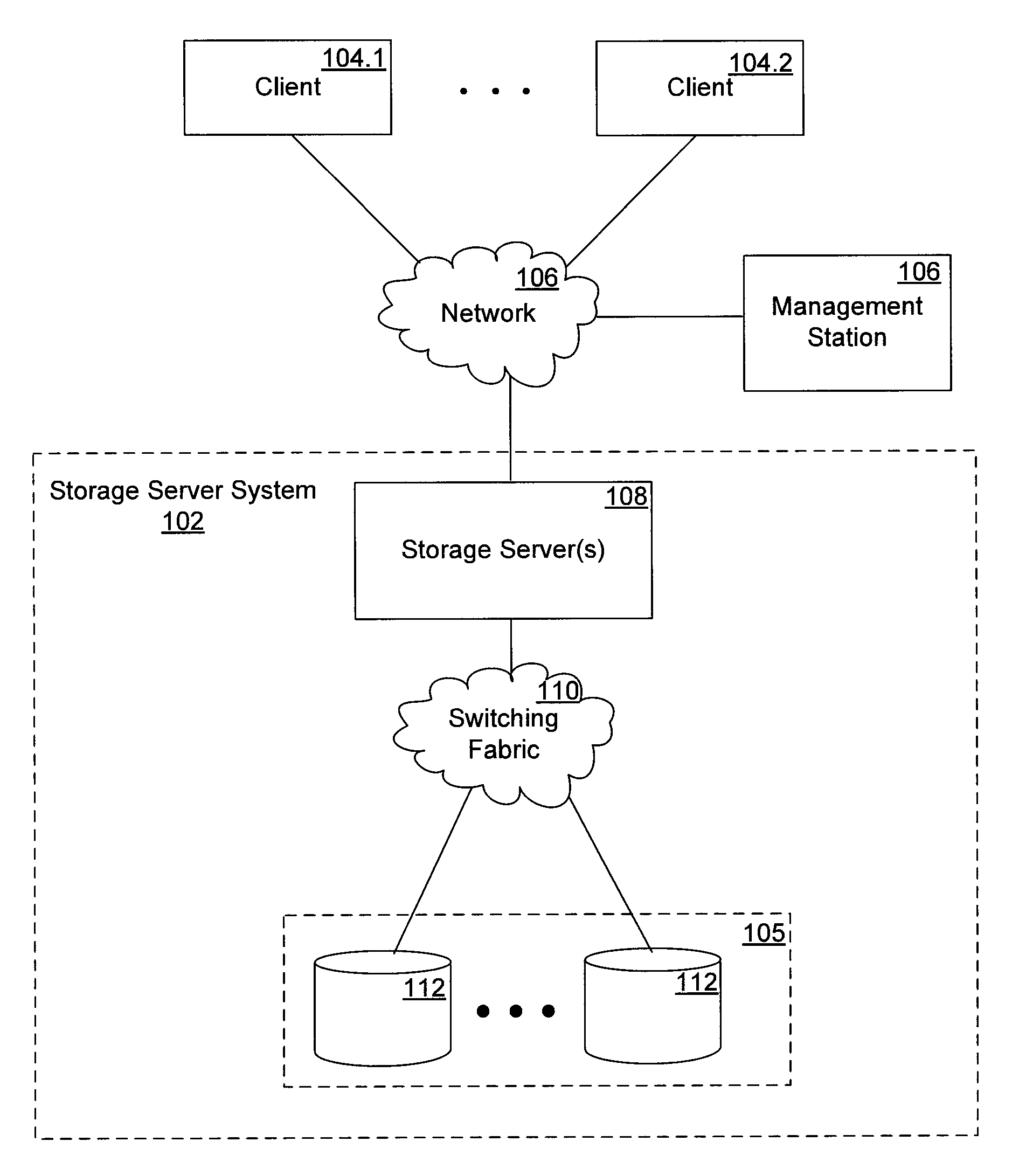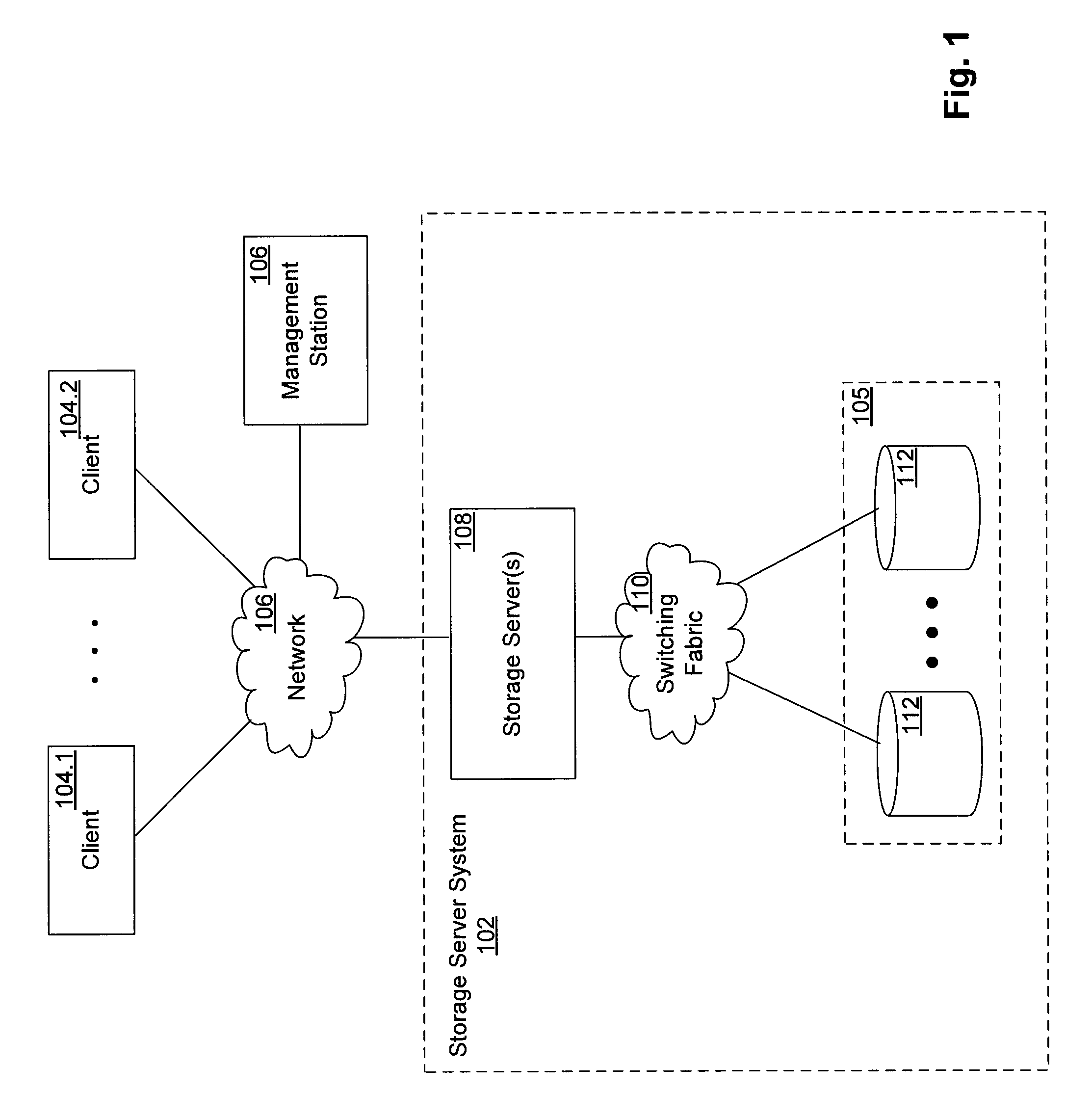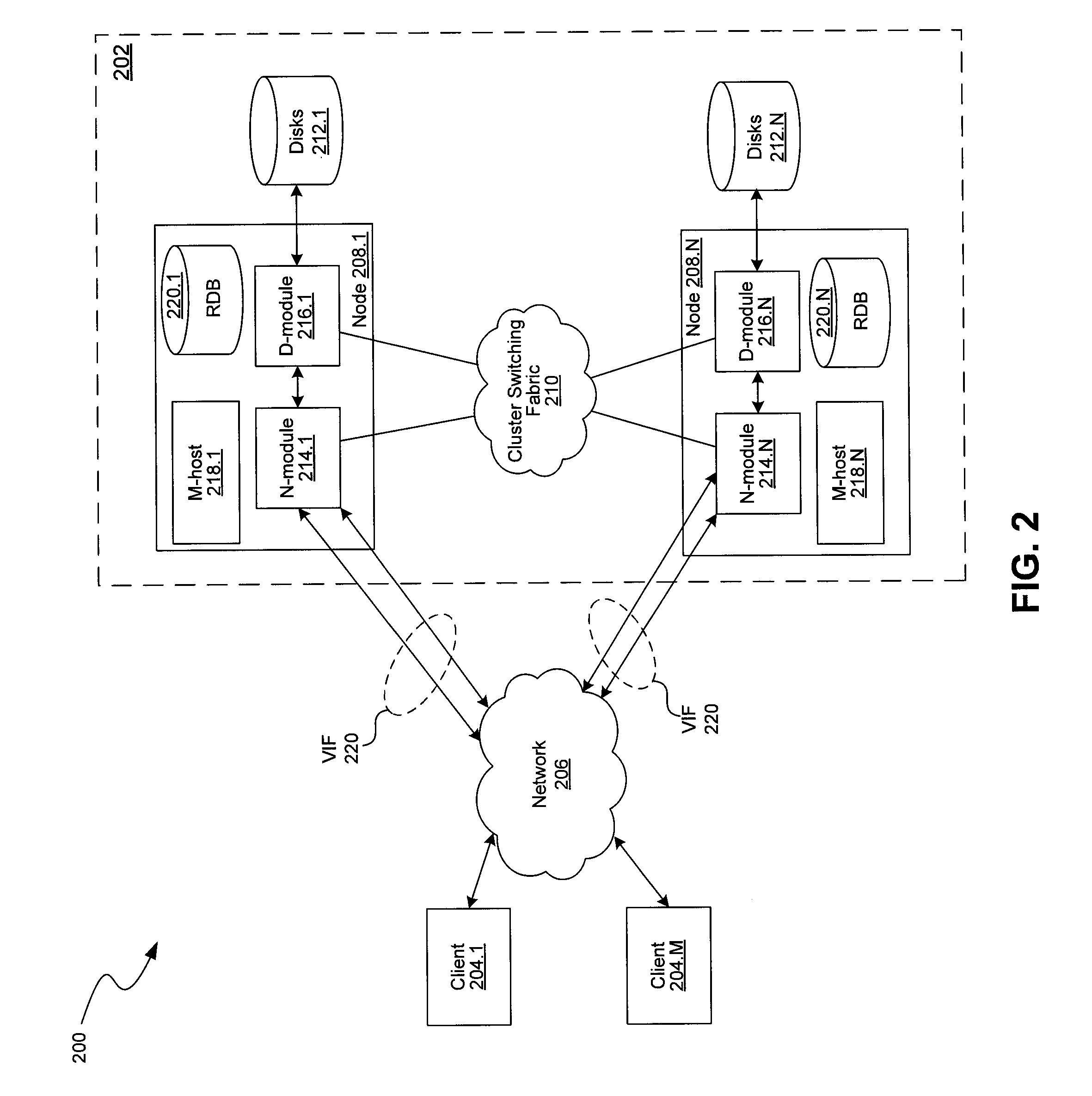Use of Similarity Hash to Route Data for Improved Deduplication in a Storage Server Cluster
a storage server and similarity hash technology, applied in the field of network storage systems, can solve the problems of not significantly contributing to reducing space efficiency, the size of the metadata needed to reconstruct the duplicate data sequence becomes an overriding issue in its effectiveness, and the data duplication is generally not desirable, so as to avoid unnecessary data duplication across different nodes and efficiently route data
- Summary
- Abstract
- Description
- Claims
- Application Information
AI Technical Summary
Benefits of technology
Problems solved by technology
Method used
Image
Examples
Embodiment Construction
References in this specification to “an embodiment”, “one embodiment”, or the like, mean that the particular feature, structure or characteristic being described is included in at least one embodiment of the present invention. Occurrences of such phrases in this specification do not necessarily all refer to the same embodiment.
System Environment
FIGS. 1 and 2 show, at different levels of detail, a network configuration in which the techniques introduced here can be implemented. In particular, FIG. 1 shows a network data storage environment, which includes a plurality of client systems 104.1-104.2, a storage server system 102, and computer network 106 connecting the client systems 104.1-104.2 and the storage server system 102. As shown in FIG. 1, the storage server system 102 includes at least one storage server 108, a switching fabric 110, and a number of mass storage devices 112, such as disks, in a mass storage subsystem 105. Alternatively, some or all of the mass storage devices 2...
PUM
 Login to View More
Login to View More Abstract
Description
Claims
Application Information
 Login to View More
Login to View More - R&D
- Intellectual Property
- Life Sciences
- Materials
- Tech Scout
- Unparalleled Data Quality
- Higher Quality Content
- 60% Fewer Hallucinations
Browse by: Latest US Patents, China's latest patents, Technical Efficacy Thesaurus, Application Domain, Technology Topic, Popular Technical Reports.
© 2025 PatSnap. All rights reserved.Legal|Privacy policy|Modern Slavery Act Transparency Statement|Sitemap|About US| Contact US: help@patsnap.com



